Looking for some ideas for things to do in Himeji? If I say 'Himeji' what do you think of?
If you've heard of Himeji then there's a pretty good chance you're thinking of Himeji Castle. But, stunning though the castle unquestionably is, there's more to Himeji than just the castle.
If you've already visited Himeji and its castle and are considering a return, or want to know what else this coastal city has to offer beyond the (magnificent) castle then read (or listen) on…
Listen to the podcast ►
7 Extraordinary Things To Do in Himeji (Beyond The Castle)
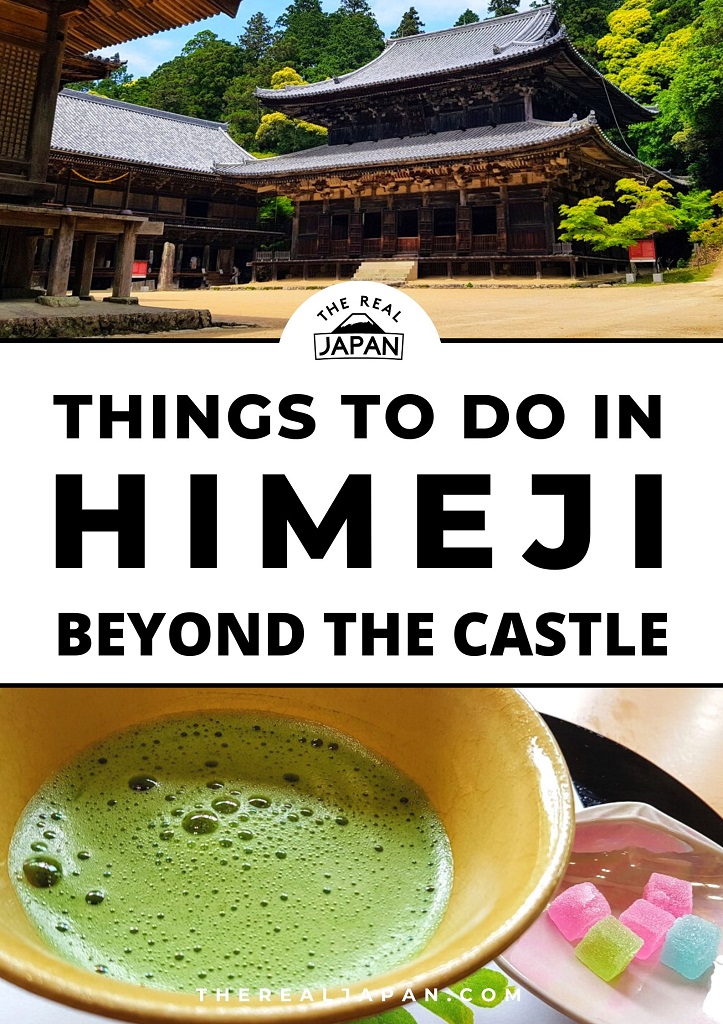
Things To Do In Himeji (Beyond The Castle)
by Rob Dyer
Key Takeaways
- Beyond its renowned castle, Himeji boasts a diverse cultural landscape offering a wide range of experiences for travellers
- This guide highlights seven extraordinary things to do in Himeji that go beyond visiting the famous castle
- You can immerse yourself in samurai history and culture through various activities and historical sites
- Key experiences include exploring the historic Engyoji Temple, famed for its appearance in The Last Samurai
- Enjoy photographic vantage points of Himeji Castle from Otokoyama Hachimangu Shrine
- Stroll through the beautiful Edo-style Kokoen Garden located next to Himeji Castle
- Indulge in local cuisine, such as a wagyu beef lunch at Kassui-ken restaurant
- Sample local Himeji sake at the Tatsuriki sake shop
- Get hands-on experience at the Yamasa fishcake factory
- Discover the hidden culture of samurai sword making at the Myouchin forge (by appointment) or visit their windchime workshop
- Most of these attractions are easily accessible from the city centre, with the exception of Myouchin, which requires a car/taxi
- It is possible to experience many of these highlights in one day with careful planning, though an overnight stay is recommended for a more leisurely trip and to include Himeji Castle
Walking in the footsteps of samurai
Beyond its magnificent castle, Himeji has a history steeped in the way of the samurai.
Whether it's exploring the remote mountain temple featured in the Tom Cruise film The Last Samurai, strolling through and edo style Japanese garden (Kokoen), indulging in some of Japanese fine wagyu beef, or sampling from a range of local sake, witnessing a genuine samurai sword being forged the way it was hundreds of years ago, all of these things are possible in Himeji.
If you keep to a well-organised schedule you can do all of this in one day (I did).
If you'd like to take your time, I recommend staying overnight and including a visit to Himeji Castle alongside these ideas, which will also help add more context to some of them.
Highlights of Himeji (beyond the castle):
Getting around
Most of these activities are readily accessible from the city centre, with the exception of Myouchin sword maker. The best way to get there is by car. Either you can rent from next to Himeji JR Station or take a taxi (also available outside the station). Engyoji Temple is on Mt. Shosha, accessed via a cable car.
1.) Explore Engyoji Temple as featured in The Last Samurai
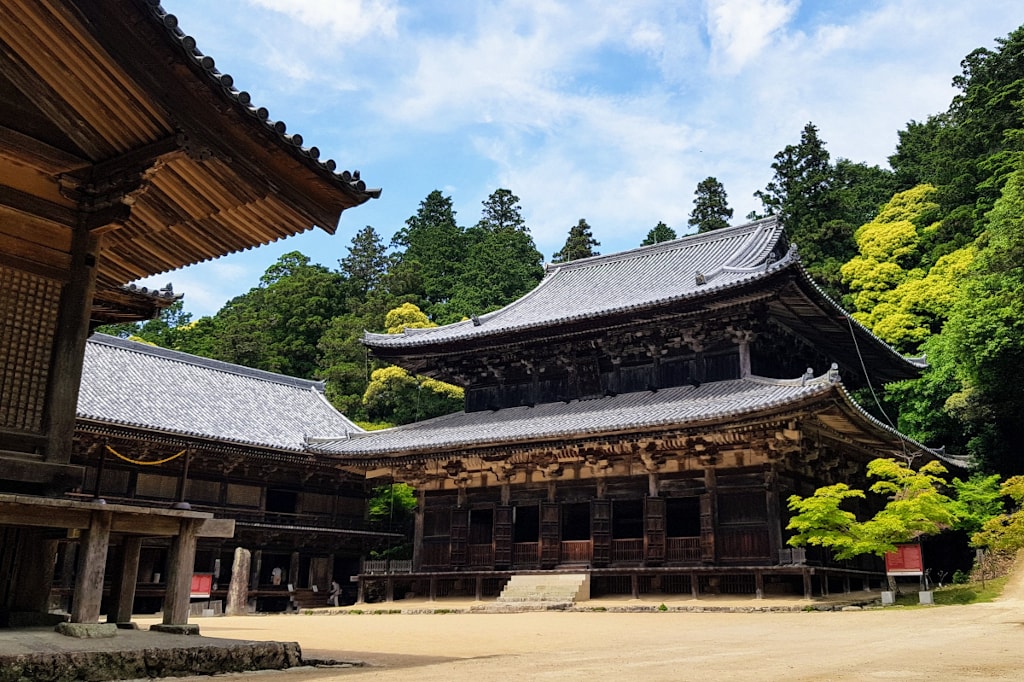
The Mitsudo is a cluster of three impressive wooden buildings at the heart of Engyoji Temple, completed in 966 AD
Completed in 966 AD, the extensive wooden complex of buildings that form the Buddhist Engyoji Temple on Mount Shosha are an absolute must-see if you're visiting Himeji. Built in and surrounded by a forest, the atmosphere here (even if you're not religious) really is something special.
At Mount Shosha take the cable car up the mountain. This runs every 15 minutes during the daytime. The cable car takes around 10 minutes. Starting from the top station you then follow the signs for Engyoji Temple, around 20 minutes walk.
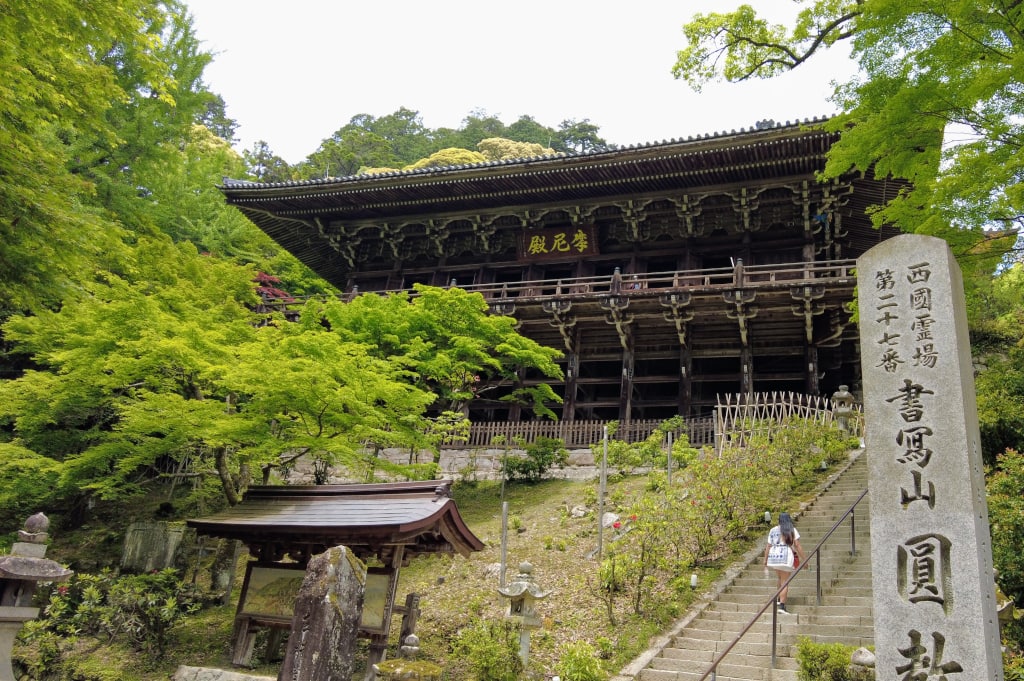
The Maniden is the imposing main building near the centre of the Engyoji Temple complex
Sometimes referred to as Shoshazan Engyoji Temple, it was made famous internationally after appearing in the film The Last Samurai starring Tom Cruise. It's an epic fictionalised drama set in the wake of the Meiji Restoration. The film's plot was inspired by the 1877 Satsuma Rebellion led by Saigō Takamori, and the Westernization of Japan by foreign powers.
The more recent Snake Eyes: G.I. Joe Origins makes extensive use of Engyoji Temple but presents it as the hidden headquarters of the bad guys. The film is no Oscar contender but is worth watching to spot all the real Japanese locations used during filming.
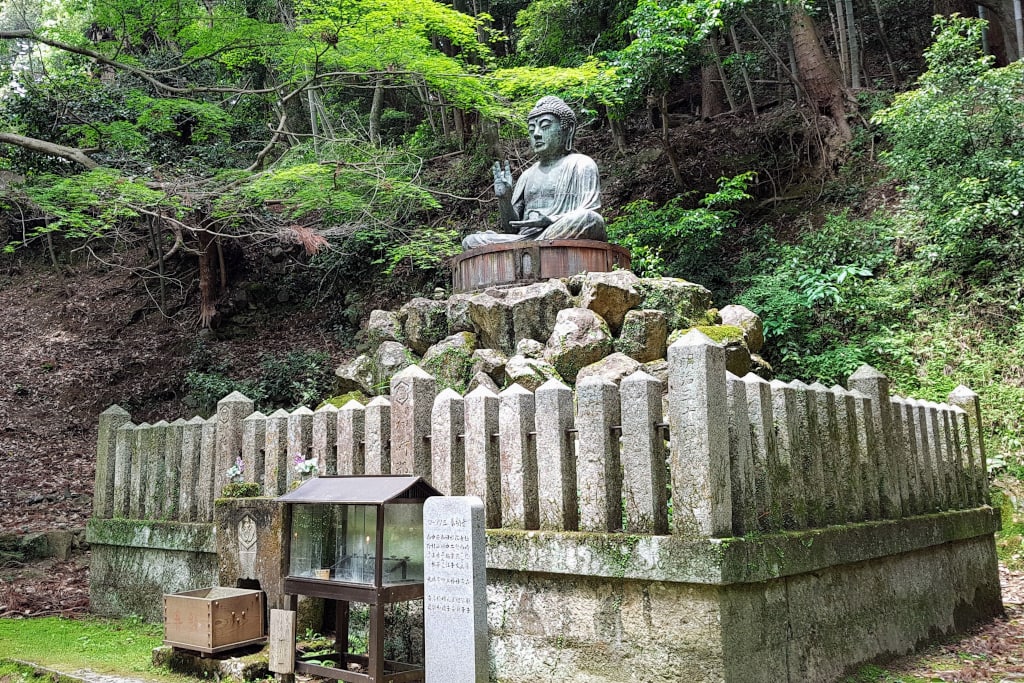
A spot to pause and reflect on the statue of the Buddha sitting in the lotus position
You could easily spend several hours here but if you don't have a great deal of time, head straight for the Maniden, the main building at Engyoji, you'll want to stop to take photographs. It's also possible to write an ema wish tablet - a wooden board on which you write a wish and leave at the temple.
Likewise at the Mitsudo, the three buildings at the heart of the complex, stop to take more photos before practising some Japanese calligraphy.
Download a detailed illustrated Map of Himeji's spectacular Engyoji Temple:
Access to Engyoji Temple:
Address: Engyoji, 2968 Shosha, Himeji, Hyogo Prefecture 671-2201
By Bus: Catch the local No. 8 Shinki Bus from the North Side of Himeji JR Station. Stay on the bus and get off at Yokozeki stop - the last stop - it takes around 18 minutes. From there it is a 2.4km walk taking around 30 minutes to Engyoji Temple.
By Cable Car: Catch the bus as above and get off at Shoshazan Ropeway. Cars run every 15 minutes and take 10 minutes to complete the journey to the top. Tickets are ¥500 one-way, ¥900 round-trip.
By Car/Taxi: 20 minutes from city centre. If travelling by taxi simply ask for Engyoji Temple (it's a good idea to have the name written in Japanese kanji to show the driver). If you're driving from Himeji Station head west along Route 2, just after the Fire Station on your left turn right onto Route 414 (signs for Yumesaki). Follow it due north as it turns into Route 67 for 5.5km. Park in the free carpark next to Yumesaki River and walk the final 500m to the Temple.
Essential Info - Engyoji Temple
Location Map
2.) Visit Otokoyama Hachimangu Shrine for a photographer's vantage point of Himeji Castle
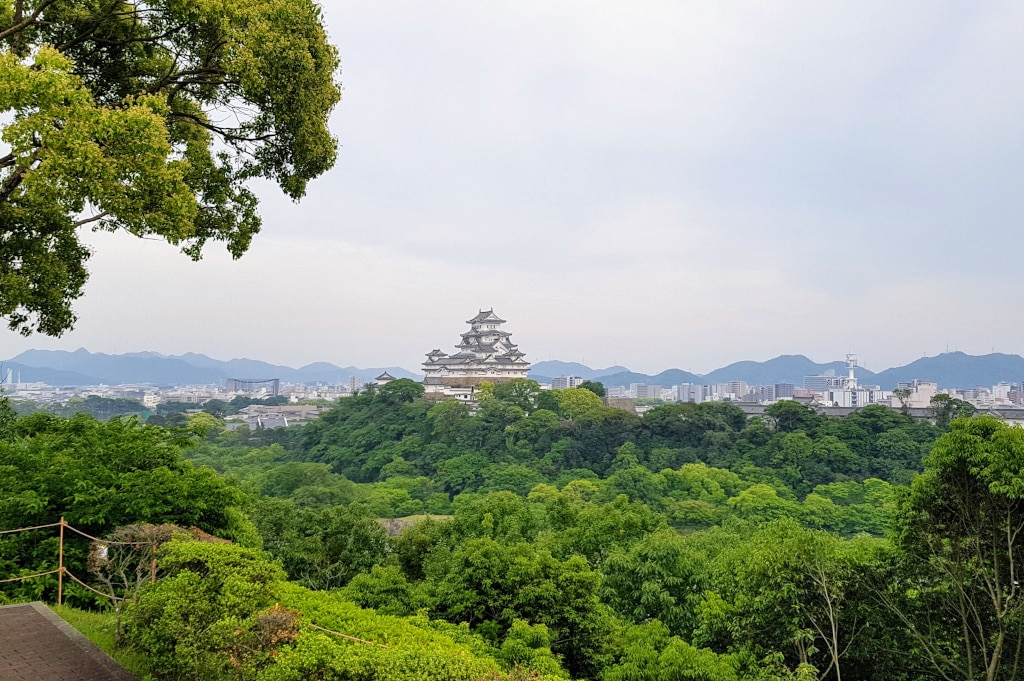
This view of Himeji Castle is popular with professional photographers
Otokoyama Hachimangu Shrine is a Shinto shrine around 10-15 minutes walk from Himeji Castle, located in Minamiyashio Park.
The shrine itself is small, but at the highest point, up a steep flight of stone steps, a garden overlooking the city below offers excellent views of Himeji Castle in the middle distance. It’s a location often used by professional photographers as a point from which to shoot the castle, but is little-known by tourists.
If you want to avoid the steep steps, you can get to the top of the shrine by heading to the left-hand side of the shrine and you'll find another way up that has a more gentle slope.
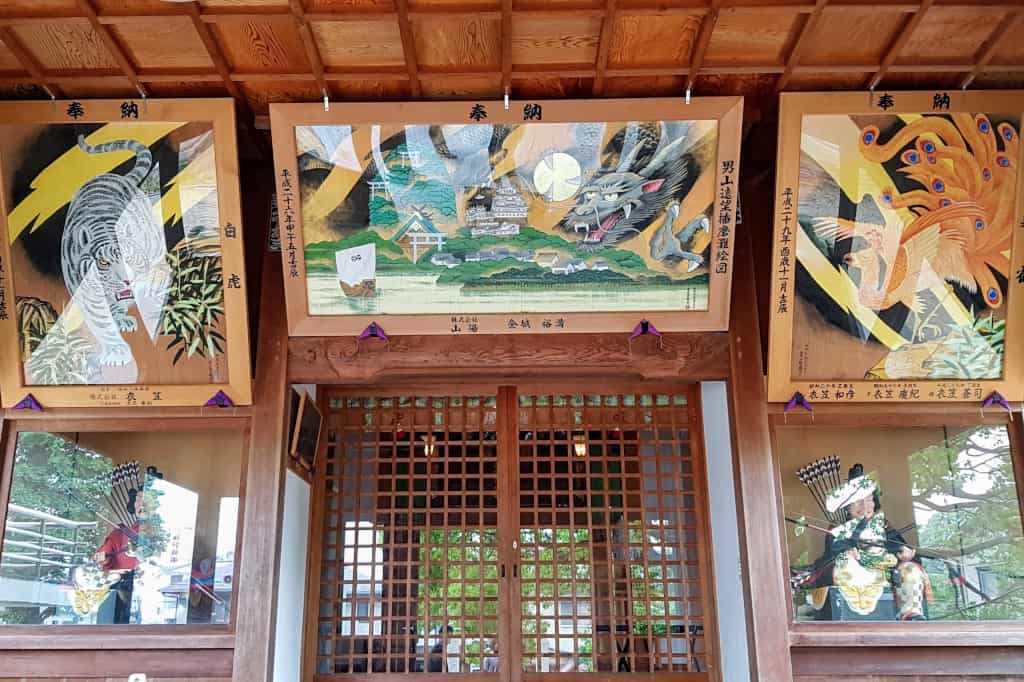
Otokoyama Hachimangu Shrine is a Shinto shrine a short walk from Himeji Castle
Address: 1-3 Yamanoicho, Himeji, Hyogo 670-0021, Japan
Telephone: +81 79-291-1550
Essential Info - Otokoyama Hachimangu Shrine
Location Map
3.) Stroll an Edo-style Japanese Garden next to Himeji Castle at Kokoen

Inside the garden is a Japanese tea house
Kokoen Zen Garden, next to Himeji Castle, is a strolling style 8.5 acre Japanese garden was constructed in 1992 in style of the Edo Period (1603 and 1868) to commemorate the 100th anniversary of Himeji City.
With the UNESCO World Heritage Himeji Castle as a rather impressive backdrop, the garden is composed of nine different sized walled Japanese traditional gardens, featuring koi filled ponds. Excavations revealed the location was the former site of a Himeji Lord's Residence and a number of samurai houses.
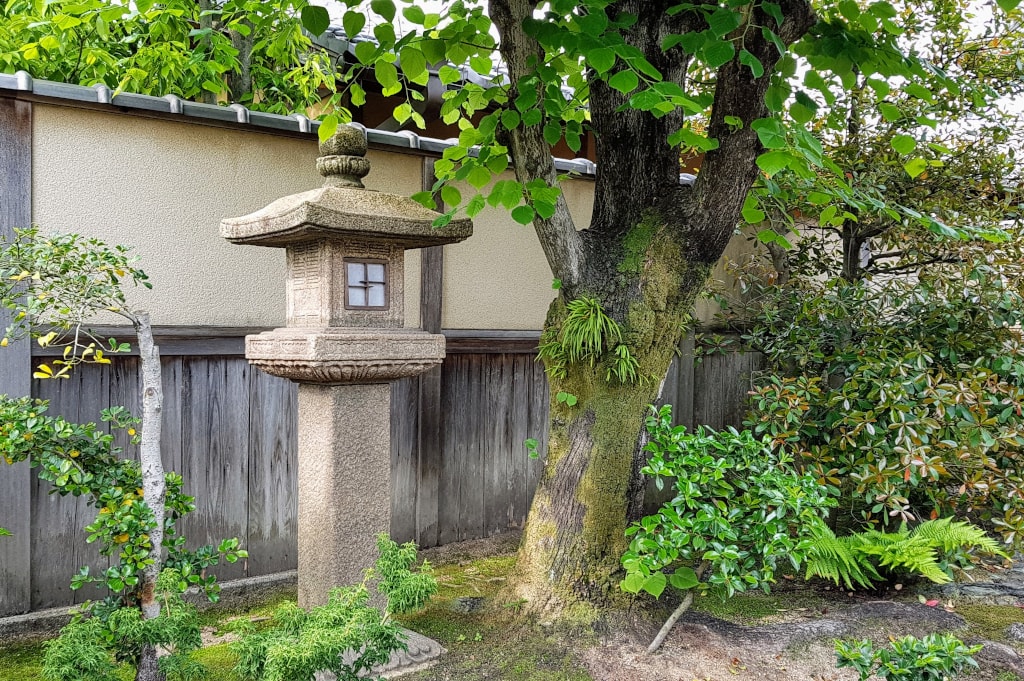
Although constructed in 1992 Kokoen has been styled after Japan's Edo Period
The nine gardens include: Garden of Bamboo, Tea Ceremony Garden, Garden of Flowers, Garden of Pine Trees, and Garden with a Hill and Pond. The gardens are designed to reflect the best of Japan's four seasons. The gardens are designed to present the best of Japan's four seasons, each taking on a different appearance and mood across the year.
So whenever you decide to visit there’ll be something specific to that season for you to see. There’s also a Sojyu-an (Japanese tea house), designed by a tea master from the Ura school, where you can experience the traditional Japanese tea ceremony (reservations required).
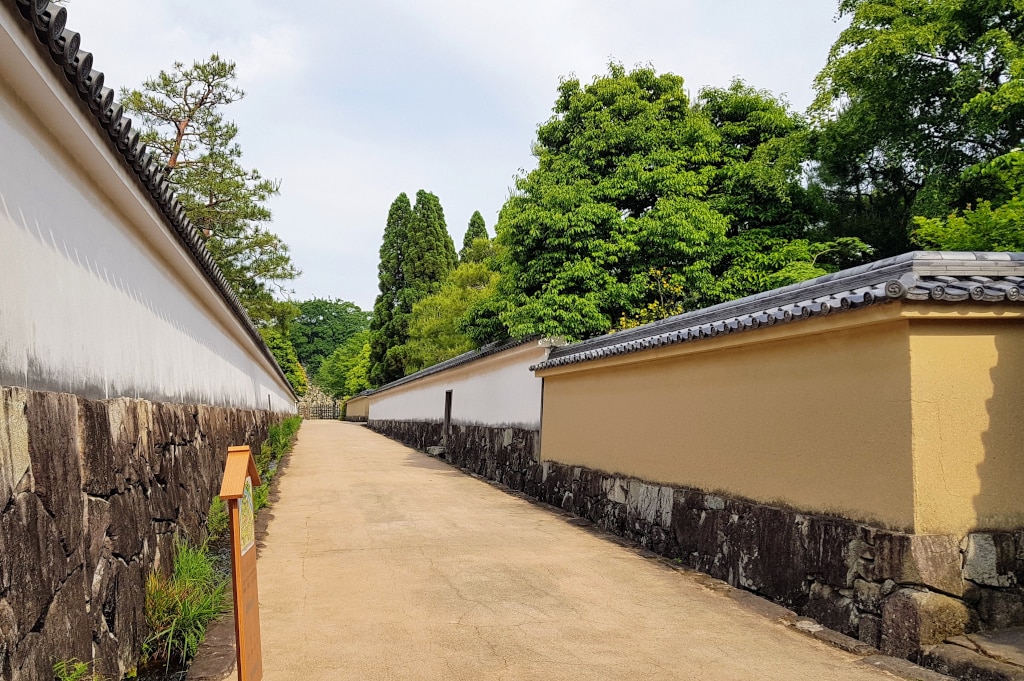
Kokoen is often used as a filming location for Japanese period dramas
The gardens are wheelchair accessible and rental wheelchairs are available. It's a direct 20 minute walk straight up Otemae-dori Street from JR Himeji Station (approximately 1 km. 5 minutes by bus (¥100 single) or taxi (around ¥750).
TIP: Check the official website for details on upcoming special exhibitions or seasonal events (including night viewing when the gardens are lit up).
Essential Info - Kokoen Edo-style Japanese garden
Location Map
4.) Indulge in a wagyu beef lunch at Kassui-ken restaurant
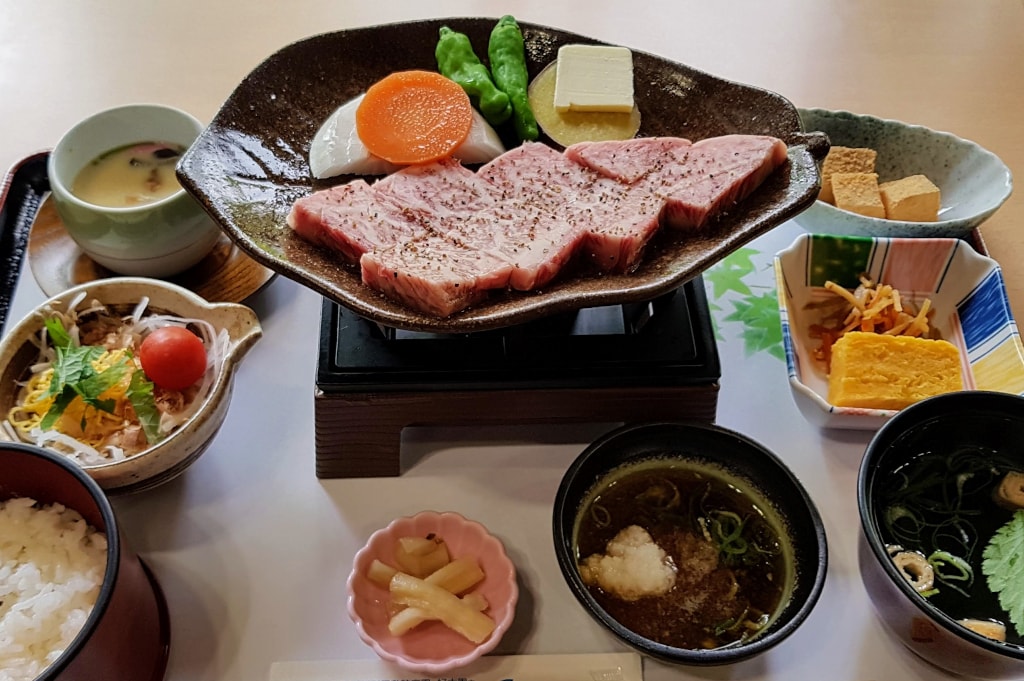
Kassuiken restaurant offers a number of set meal lunch options, including this waygu beef set
Working your way around Himeji, you're going to want to eat well. For a taste of Himeji's quality cuisine I recommend a stop at Kassui-ken restaurant. Which is conveniently located inside Kokoen garden and next to Himeji Castle. Although they specialise in udon noodles and eel dishes, they also offer wagyu beef (which I had), tempura, seasonal dishes, matcha tea, and cake sets.
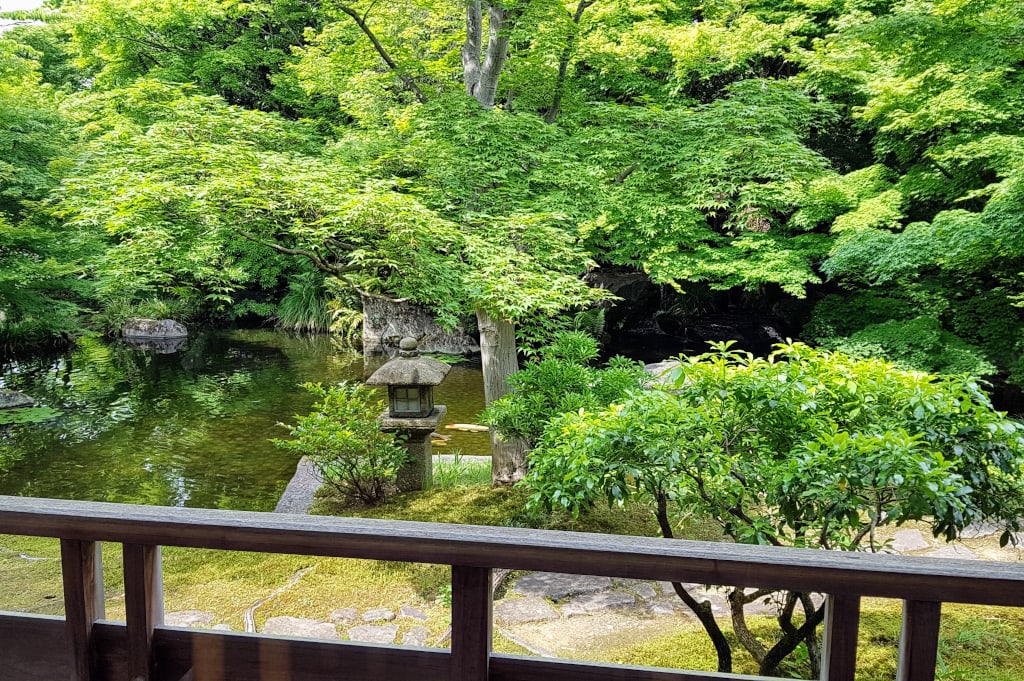
Some tables at the restaurant offer views over the surrounding Kokoen Edo-style Japanese garden
The restaurant is modestly sized with several tables offering views outside over the tranquil Kokoen garden. Although not a signature dish, I fancied trying the wagyu beef set menu. It consisted of nine individual elements with eight chunky pieces of marbled beef the centrepiece, which one cooks oneself on the candle burner.
Example set meals available (bearing in mind some seasonal variations) include:
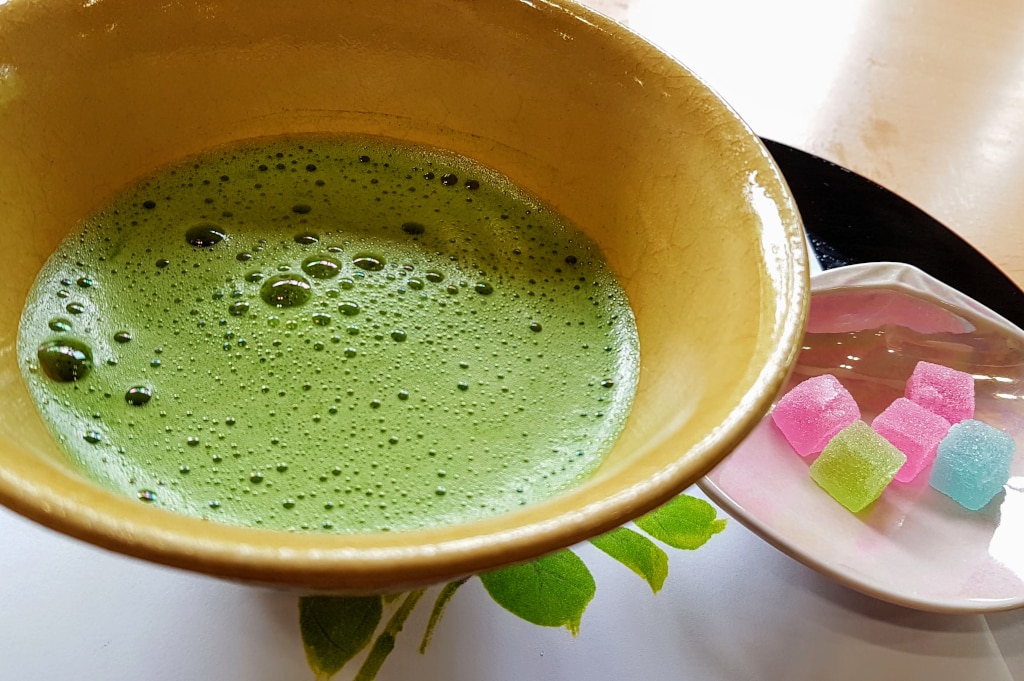
You can follow your meal with a freshly prepared matcha green tea and sweets
Kassui-ken is open between 10:00 - 16:30 daily with the lunch menu served between 11:00 - 15:00. The menu consists a small number of set meals using seasonal ingredients. Menus are available in English and have photographs of all dishes included in each set, making choosing between them easy.
TIP: Reservations cannot be made during March, April, May, October, November and during Special Events.
Essential Info - Lunch at Kassui-ken restaurant
Location Map
5.) Sup up history by sampling local sake at Tatsuriki
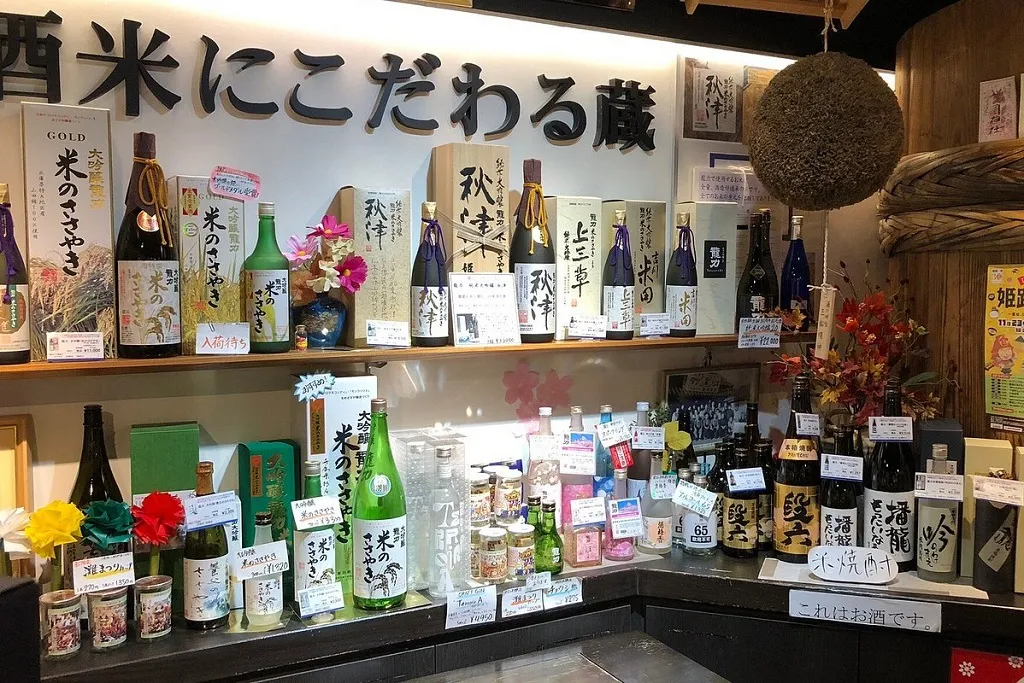
Tatsuriki sake shop | Credit: Ohkso
The Harima region, including Himeji, is considered the birthplace of Japanese sake based on references in the "Harima Fudoki," a document from the Nara Period approximately 1,300 years ago that identifies Harima as the source of sake brewing methods.
Himeji offers ideal sake-brewing conditions with its excellent water quality and the Harima plain producing 80% of Japan's Yamada Nishiki rice—the premium short-grain variety prized for sake production. Eight distinct sake breweries operate within Himeji City, each crafting their own signature sake varieties.
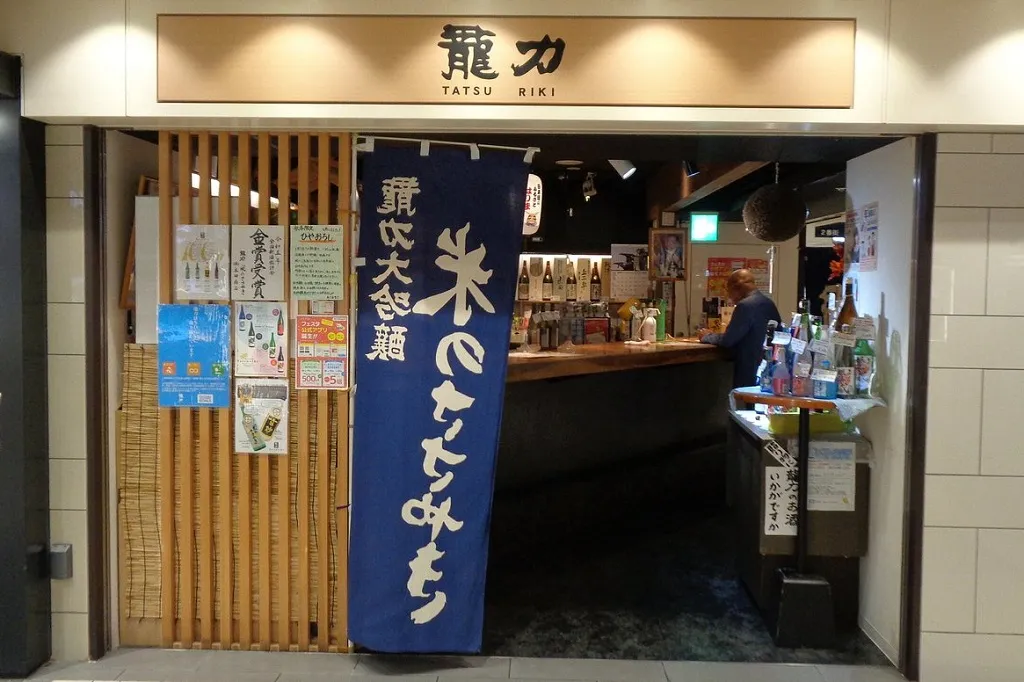
Tatsuriki sake shop | Credit: Ohkso
Meijo Sake Brewery traces its history back to 1864, developing its distinctive techniques and traditions over nearly 150 years. In 1961, seven Himeji breweries consolidated to form the present-day Meijo Brewery, named in honour of the internationally renowned Himeji Castle.
Yaegaki Brewery, established in Hayashida, Banshu, creates its sake using the region's celebrated Yamada Nishiki rice - widely regarded as the premier sake rice variety. Their brewing process combines this exceptional rice with the renowned "longevity water" from the Hayashida River and cold brewing techniques perfected by their contemporary craftsman and head brewer, Hirokazu Tanaka.
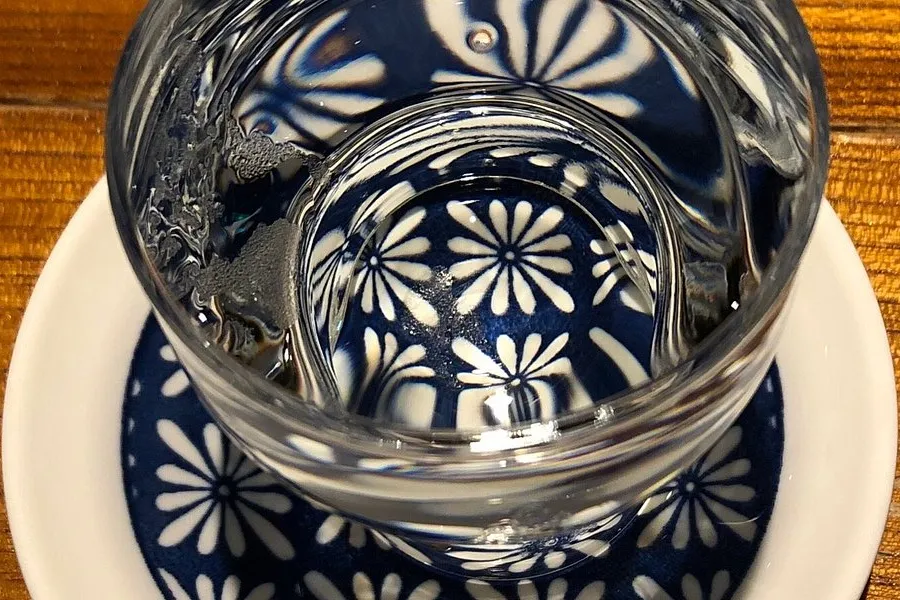
Tatsuriki sake shop | Credit: Ohkso
To sample (and purchase) sake from Meijo and Yaegaki and many other local sake breweries be sure to visit the Tatsuriki sake shop. A sake brewery themselves, they also provide direct sales of a variety of local Himeji sake. Here you can explore a diverse selection of sake, rice shochu, liqueurs, and rice malt, with sake tasting available at affordable prices.
In the evenings, Tatsuriki's master brewer personally greets customers to share insights about Ryuriki sake. The store is located in the basement level of the Grand Festa mall in front of JR Himeji Station.
Essential Info - Tatsuriki Sake Shop
Location Map
6.) Get hands-on at Yamasa fishcake factory + Ippuku Cafe
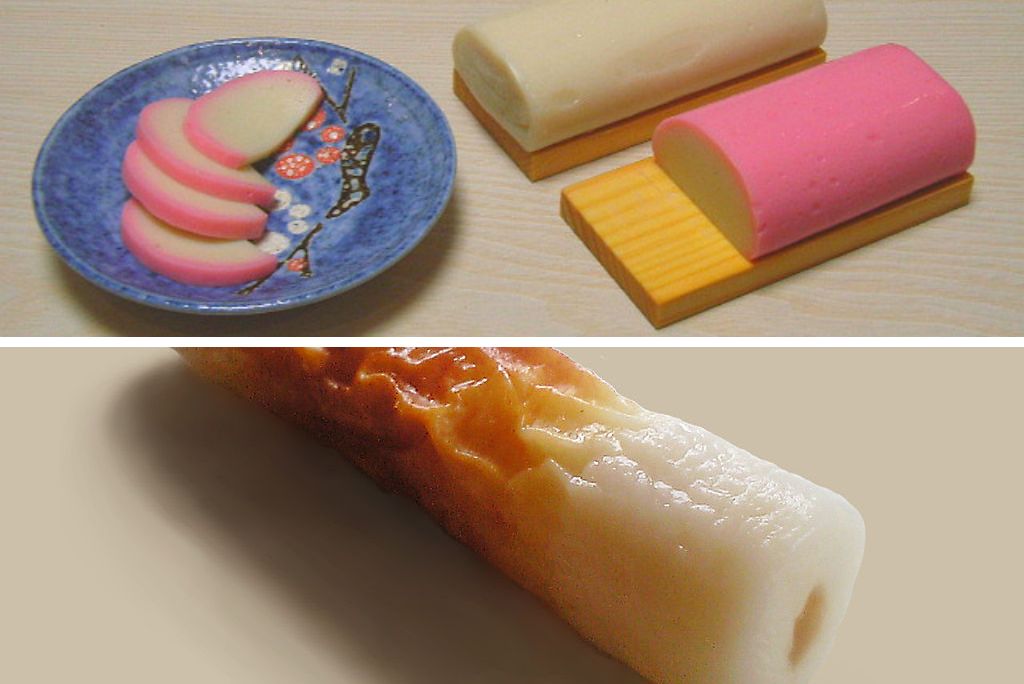
Kamaboko (top) in the form a a fishcake 'loaf' and chikuwa (bottom) in tub-shaped form
If you want to experience something unusual, then consider a visit to Yamasa kamaboko (fish cake) factory and Ippuku cafe. Either sample fishcakes at the factory or, if fishcakes are not for you, there is a regular cafe selling coffee and cakes.
It’s a working factory but they offer free factory tours and some fish cake making experiences. The latter requires booking in advance. Factory tours happen twice a day on weekdays and six times a day on Sundays and holidays. Tours give visitors the chance to watch the production line process of their imitation crab meat and their chikuwa (tube shaped kamaboko) line.
They also have bookable experiences where you can try making chikuwa and kamaboko yourself with fresh fish paste (¥1,500, reservations required).
Yamasa kamaboko factory is in Okimoto, Yumesaki-cho, Himeji City. It’s around 20 minutes from Himeji city centre by car.
Essential Info - Yamasa fishcake factory
Location Map
7.) HIDDEN CULTURE: Samurai sword maker Myouchin
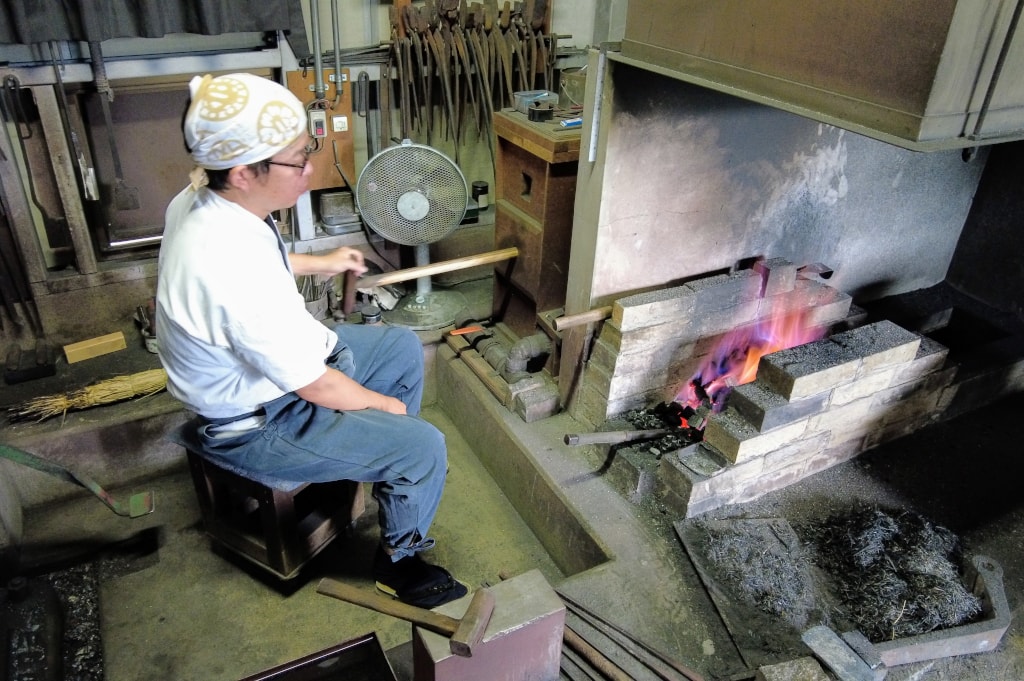
Munehiro Myouchin begins the painstaking work of making a traditional samurai sword
On a recent visit to Himeji, I was fortunate to visit Munehiro Myouchin, a multi-award winning specialised sword maker.
The little-known, family-run forge is hidden on the northern outskirts of Himeji's city boundary. The Myouchin family is a lineage of armour and helmet makers unbroken since the Heian era (784–1184). The swords here are meticulously handmade, taking around one month to craft, selling for around $25,000 each.
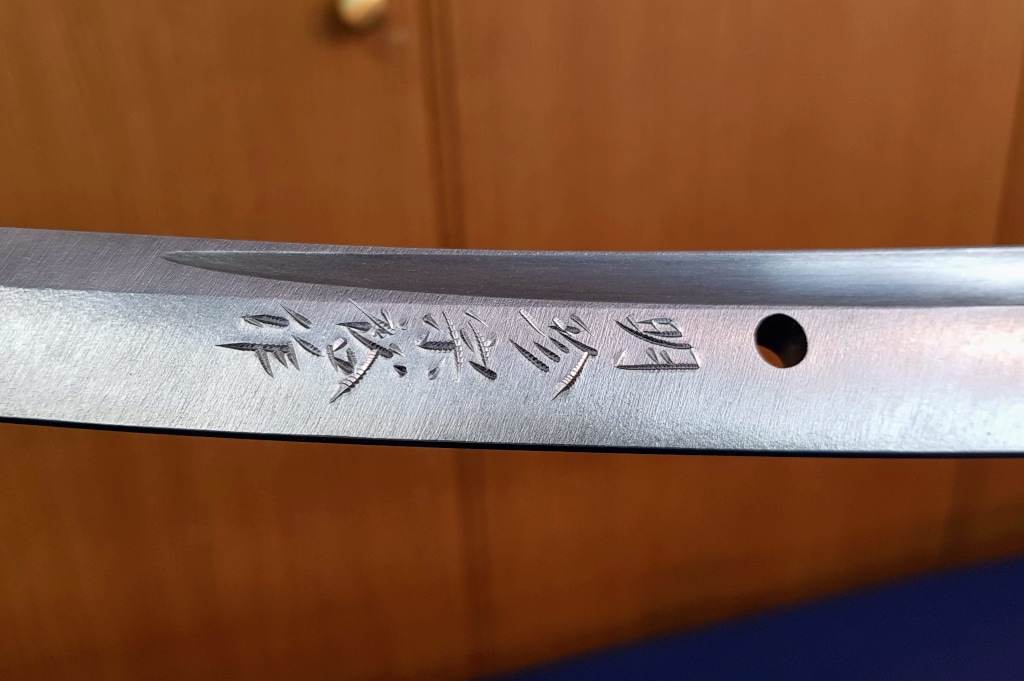
A finished Myouchin sword blade hilt awaiting its handle
The smelting process of extracting the component metals from the raw ore takes three days of working in intense heat, giving the swordsmiths 'sunburnt' skin from the heat exposure. Craftsmen take it in turns and have to miss sleep in order to complete the ore extraction. Five to seven kilos of ore are required to produce one sword. And the forge only makes smelt in the winter months as it is simply too hot during the rest of the year.
Access to this almost secret mountain sword forge is limited and strictly by appointment only. My visit was arranged through Gerard O'Sullivan, a resident of Himeji, who runs the Go To Japan Facebook Group.
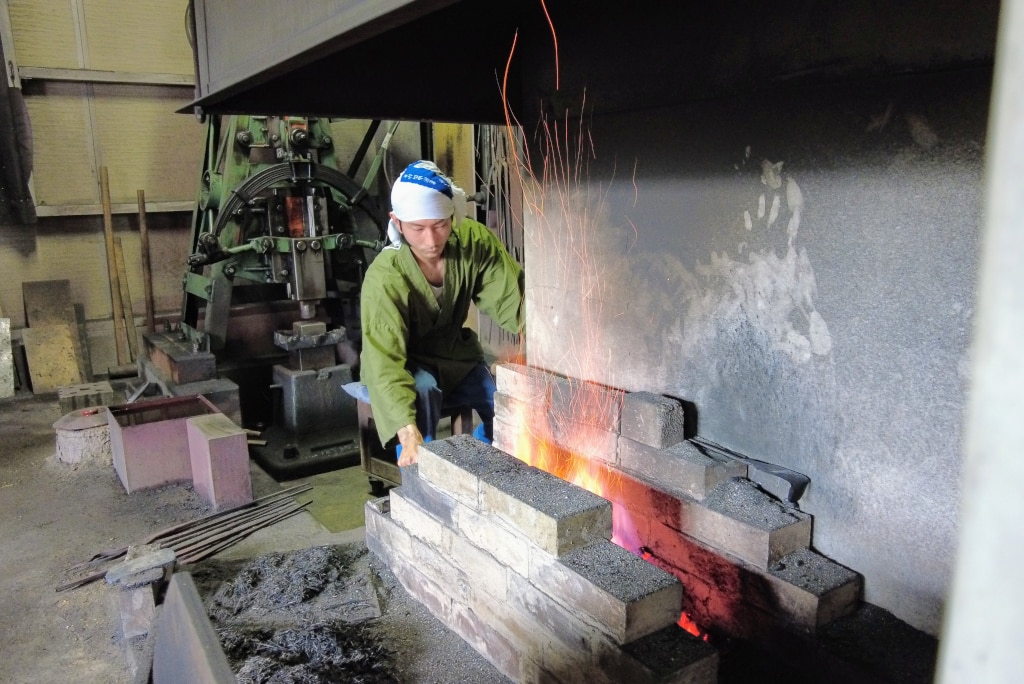
A Myouchin apprentice gets the charcol up to the right temperature
However, their main workshop specialising making fire tong windchimes, highly prized for their clear tones, is open to the public, without appointment and easily accessible by taxi or bus. From the Shinki Bus terminal, North Side of Himeji Station, take the bus bound for "National Medical Center" get off at "Nozato". It's a 1 minute walk from there.
If you wish to take a short break either on the way to, or on the way back from Myouchin consider stopping at the Yamasa kamaboko (fish cake) factory and Ippuku cafe.
Official Myouchin Honpo website (Google translated)
Address: 〒670-0871 112 Ideni Uenomachi, Himeji City, Hyogo Prefecture
Where to stay in Himeji
A couple of mid-range chain hotels that are conveniently located in the city centre are the Daiwa Roynet and the Richmond Hotel.
Daiwa Roynet
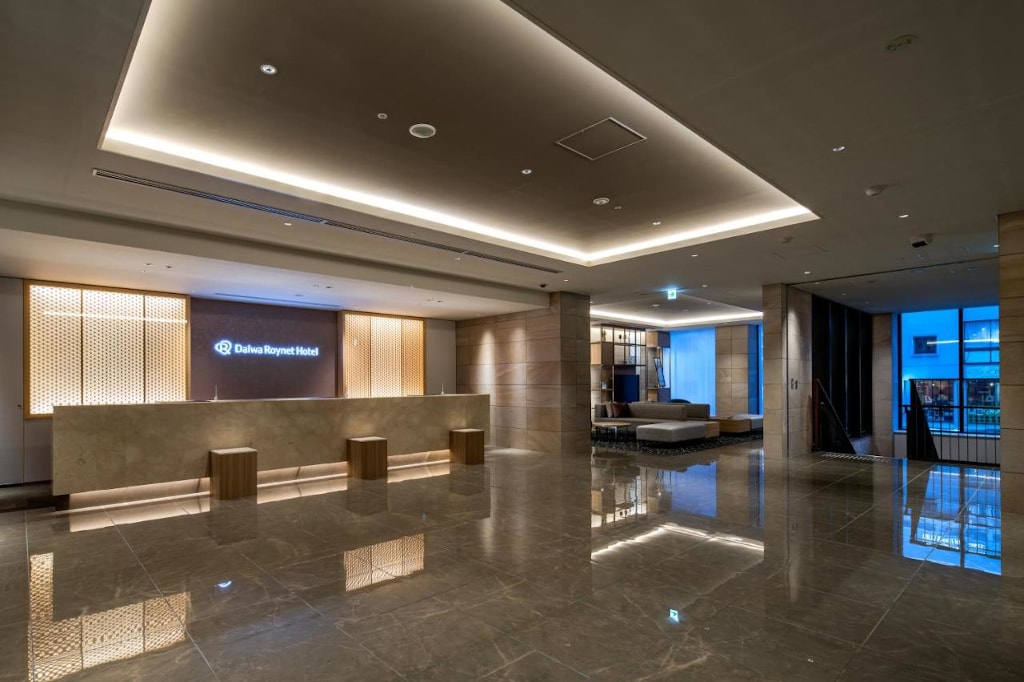
Located on the north side of Himeji RJ train station, Daiwa Roynet offers private parking if you're driving, or is only a 5 minute walk from Himeji JR Station if you're travelling by train. It's less than a 15 minute walk from the hotel to Himeji Castle, Kokoen Garden and Kassui-ken Restaurant.
The hotel has a fitness centre, a 24-hour front desk and luggage storage space, along with free WiFi in all rooms. Rooms are air-conditioned, with a desk, a kettle, a safety deposit box, a flat-screen TV and a private bathroom with a bidet.
A continental breakfast is available daily.
One of Japan's biggest chain hotel groups, Daiwa have hotels throughout the country ranging from Hokkaido in the north to Okinawa in the south.
Richmond Hotel
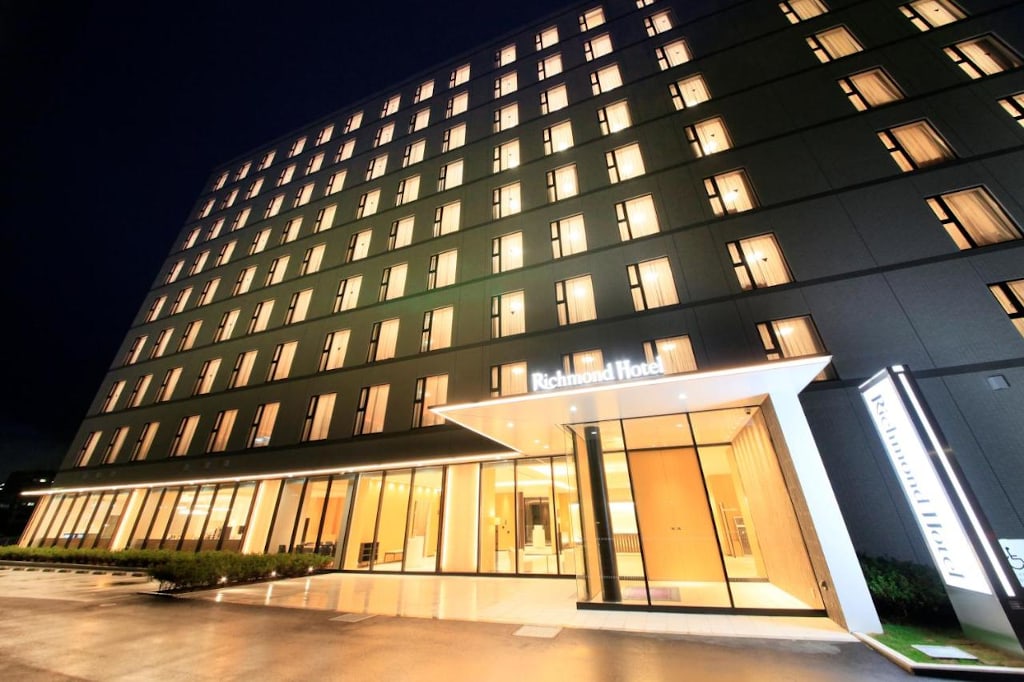
Located on the south side of Himeji JR Station, Richmond Hotel is perfect for a one-night stay and is often used by repeat visitors. (I've used Richmond Hotels and wouldn't hesitate to book one anywhere in Japan.)
All rooms are fitted with air conditioning, a flat-screen TV with satellite channels, a fridge, a kettle, a bidet, slippers and a desk. The units have a private bathroom, a hairdryer and bed linen. A buffet breakfast is available each morning.
It's around 8 minutes by taxi to Himeji Castle, Kokoen Garden and Kassui-ken Restaurant.
TRJ TIP: If you don't already have a Booking.com account it's worth setting one up to get extra discounts as part of their Genius discount service. I have one.
Frequently Asked Questions: Exploring Himeji Beyond the Castle
1. What is Himeji best known for, and what else does it have to offer visitors?
While Himeji is undeniably famous for its magnificent Himeji Castle, a UNESCO World Heritage site, the city also boasts a rich history and culture extending beyond its iconic landmark. You can explore an ancient Buddhist temple featured in The Last Samurai, stroll through an Edo-style Japanese garden, indulge in local cuisine like wagyu beef and Hyogo sake, witness traditional craftmanship such as samurai sword making (by appointment), and experience a local fishcake factory.
2. How can I experience Himeji's samurai history beyond visiting the castle?
Several locations in Himeji offer a glimpse into its samurai past. Engyoji Temple on Mount Shosha, featured in The Last Samurai, provides a historic setting. Kokoen Garden, styled after the Edo period, was once the site of a lord's residence and samurai houses. Even indulging in wagyu beef and sampling local sake are presented within the context of Himeji's broader historical appeal. For a truly unique experience, a visit (by appointment) to the Myouchin samurai sword maker offers a look at traditional craftsmanship.
3. What are some notable temples and shrines to visit in Himeji aside from the castle?
Engyoji Temple, a sprawling 1,000-year-old Buddhist complex on Mount Shosha, is a significant site known for its historical buildings and serene atmosphere. Otokoyama Hachimangu Shrine, a Shinto shrine a short walk from Himeji Castle, offers excellent panoramic views of the castle and the city below, making it a popular spot for photographers.
4. Can you describe Kokoen Garden and what makes it a worthwhile visit?
Kokoen is an 8.5-acre strolling-style Japanese garden located next to Himeji Castle. Created in 1992 to commemorate Himeji City's centenary, it is designed in the Edo period style and comprises nine distinct walled gardens, including a bamboo garden, a tea ceremony garden, and a garden with a pond and hill. With Himeji Castle as a backdrop, Kokoen offers seasonal beauty and a tranquil escape, with the option to experience a traditional tea ceremony.
5. What local culinary experiences are recommended in Himeji?
Himeji offers several opportunities to savour local flavours. Kassui-ken restaurant, located within Kokoen Garden, is recommended for its wagyu beef lunch sets, as well as udon, eel dishes, and seasonal options. For those interested in local beverages, Nihonshu Bar Kokoromi, near Himeji JR Station, boasts a wide selection of Hyogo Prefecture's renowned sake, with tasting options and workshops available. Additionally, a visit to the Yamasa fishcake factory includes the option to sample fishcakes or enjoy the Ippuku cafe.
6. For those interested in traditional Japanese crafts, what opportunities exist in Himeji?
Visitors can witness the art of traditional samurai sword making at the Myouchin forge, although access to the workshop is strictly by appointment. However, their main workshop creating fire tong windchimes is open to the public. Another unique experience is a visit to the Yamasa fishcake factory, where you can take a free tour to see the production process or participate in a hands-on fishcake making experience (reservations required).
7. How easy is it to get around Himeji and access the attractions mentioned?
Most of the highlighted attractions, such as Kokoen Garden, Kassui-ken restaurant, and Nihonshu Bar Kokoromi, are readily accessible within the city centre. Engyoji Temple on Mount Shosha is reached via a local bus and a cable car. The Myouchin sword maker is best accessed by car or taxi, though their windchime workshop is reachable by bus. Renting a car is an option from near Himeji JR Station.
8. Are there recommended places to stay in Himeji for visitors wanting to explore beyond the castle?
The Daiwa Roynet Hotel and the Richmond Hotel are suggested mid-range options conveniently located near Himeji JR Station. Both offer good access to public transport and are within a reasonable distance of Himeji Castle, Kokoen Garden, and Kassui-ken restaurant. The Daiwa Roynet is on the north side of the station, while the Richmond Hotel is on the south side.

About the Author
A writer and publisher from England, Rob has been exploring Japan’s islands since 2000. He specialises in travelling off the beaten track, whether on remote atolls or in the hidden streets of major cities. He’s the founder of TheRealJapan.com.
Resources
Download a detailed illustrated Map of Himeji's spectacular Engyoji Temple:
Himeji Convention & Visitors Bureau website
https://www.himeji-kanko.jp.e.adl.hp.transer.com/
Himeji Tourist Information Center (079-287-3658)
Kokoen Garden Official website
https://www.himeji-machishin.jp/ryokka/kokoen/en/
Kassuiken Restaurant website
https://www.himeji-machishin.jp/ryokka/kokoen/en/kassuiken/index.html
Kokoromi Sake Bar website
https://www.originsake.com/kokoromi-himeji
Daiwa Roynet Hotel
Richmond Hotel
Go To Japan Facebook Group
More Destination Resources
My List of Recommended Japan Travel Resources
The Real Japan Travel Store
Further Related Reading
Himeji City Guide: Secret City of Sake, Swords, and Samurai
How To Spend A Week In Kansai (And Not Visit Kyoto)
5 Exclusive Japanese Knife Experiences With Traditional Artisans
Finding Peace – 5 Extraordinary Zen Meditation Experiences
If you enjoyed this article please share this image:


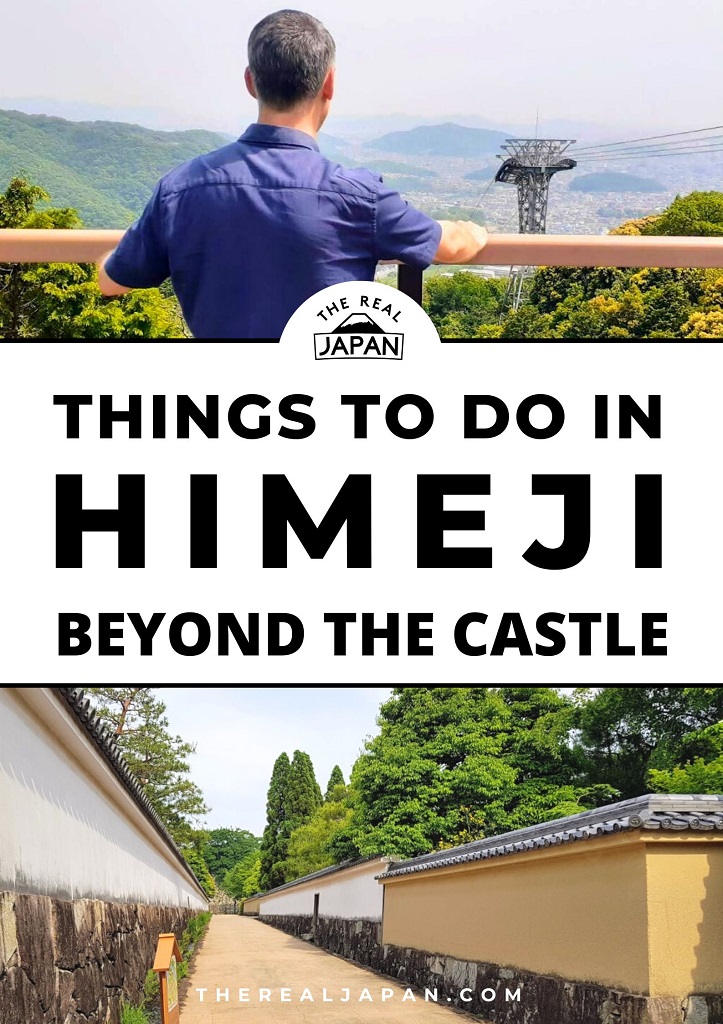
Great write up Rob. We sure packed it in to one day. It was an honor to be your humble host for a day. Look forward to next time you make it back over here. There’s still a few more things we just couldn’t fit into one day, like a visit to one of Himeji’s Saké breweries (whose saké we sampled at Kokoromi)
Thanks for showing me around Gerard. I couldn’t have done it without you.
I need to return to Engyoji Temple – I didn’t realise how extensive the complex is until we actually got there. Loved that spot!
Good interesting guide. I have to spend a bit of time in Himeji, actually been there twice this year as it is a good starting point for travelling in Chugoku by train; of course been to the castle and Koko-En – next time will spend longer there!
Glad you found the guide interesting Stephen. Like you, castle aside, I think a lot of people often use it as a starting point for exploring the Chugoku region (which I’m a fan of actually). If you revisit Koko-En do give the restaurant a try. I thought the wagyu beef set lunch I had was good value. Engyoji Temple is spectacular!
Anyone interested can find more on Chugoku in this post: https://www.therealjapan.com/2-week-tour-of-chugoku/
A very detailed guide to visit Himeji Castle and its surroundings. There are lots of activities that can take you back in time to get in touch with the history and culture of the samurai in ancient times. Well explained and very detailed, to guarantee that visitors fully enjoy the experience. A must read before and during your visit.
Thanks for the feedback Luz. Great to hear you found it so useful. Hopefully you can try some of the ideas when you visit Himeji next.